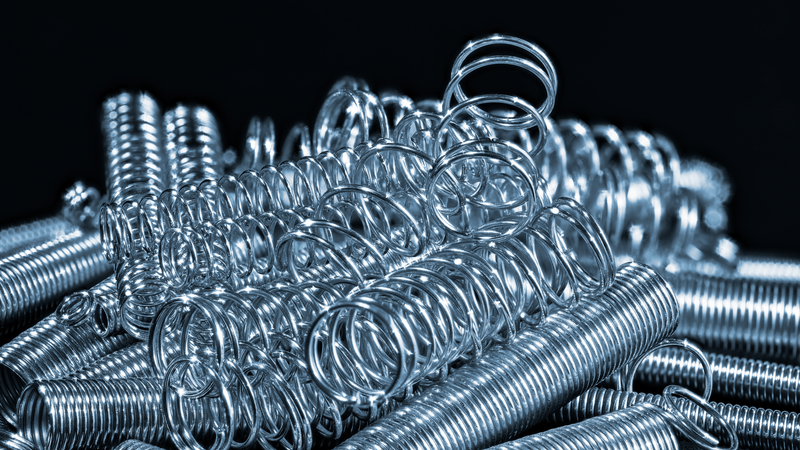The garage door springs balance the door’s weight, so it is simple to open and shut. They provide the same function as counterweights, which were utilized to counterbalance doors historically and in numerous modern doors. For instance, a 100-pound door requires a 100-pound spring force to pull against the door’s weight. To achieve this, certain pieces can be stretched or torqued by springs to help balance the door.
Understanding the various garage door spring types can save your life! You must also contact experts if you’re attempting to fix or replace a broken garage door spring.
Extension Springs
These springs, often found on the top and either garage door side, are a common garage door style. The springs can extend further in response to a greater force. The springs will extend as soon as you open the door, creating a balancing effect that will support the whole door. To avoid becoming a projectile in the case of a failure, every extension spring is required to include safety cords.
These springs are further categorized into three groups depending on the kinds of ends:
- Open-looped Ends: The garage door extension springs with open-looped ends are the easiest to replace. There is no need to unlock the eye bolt or disassemble the pulley. However, even if it is the only component of the spring that’s broken, you have to replace it because it depends on an exposed wire at the end. You might have spared a few dollars if the spring had a clip at the end.
- Double-looped Ends: A spring with these ends is more powerful than one with open-looped ends. Double-looped ends extension springs are more difficult to replace despite being stronger. Two coils that link to the eyebolt and pulley are located at the end of this sort of spring.
- Clipped Ends: They are the strongest of the three kinds of door extension springs. The spring experiences the least stress from the clips, which contributes to a longer spring life. For doors with 200 pounds or even more, clipped ends extension springs are recommended and the industry standard. They are the hardest to change, which is a drawback.
Torsion springs
The garage door’s overhead metal shaft is where they are fixed. The shaft may occasionally shelter the spring, or, based on the system; it may pass via the center of the spring. Once the shaft runs through the center of the spring, the torsion spring may be positioned at the end by the garage door’s exterior edge or at the shaft’s center.
Torque is applied to the shaft using drums at every end by the tension springs to stabilize the garage door. Every drum has a cable attached to it that runs to the base fixture at the door’s bottom and is fastened to it. As the door opens and closes, the torsion spring uncoils and coils to create a balanced system.
Three factors determine the lift and cycle life of torsion springs. The spring’s torque determines the lift, which indicates the door weight it can support. The cycle life indicates how many openings and closings should occur before the spring snaps. The length, inside diameter, and wire size make up these characteristics.
There are various kinds of torsion springs:
- Standard Torsion Spring: Situated above your garage opening, standard torsion springs are frequently utilized on domestic garage doors. The metal shaft runs through the center, stabilizing the springs. One typical torsion spring must be sufficient for a light garage door; else, two should be utilized.
- Early Set Torsion Spring: They are positioned at the torsion shaft center. Various kinds of hardware are mounted on every shaft’s end next to the wire drums.
- Steel Rolling Door Torsion Springs: They are installed inside the torsion barrels holding the doors, typically seen in commercial structures.
- Torque Master Torsion Spring: It is regarded as the safest torsion spring available. They’re held in position by a spiral cone at every torsion rod’s end and contained within the torsion shaft.
Take away
Knowing what kind of spring a garage door has is crucial because it’s a critical part of the garage door. Both springs experience extreme pressure, and each coil recoils differently. It implies that every garage door spring needs to be carefully maintained. Consult with a reputable garage door repair firm to discover which of the various spring types is best for you or your business, whether you are repairing your garage door, expanding the garage, or considering updating the garage door opener.
For more blogs click here.









































